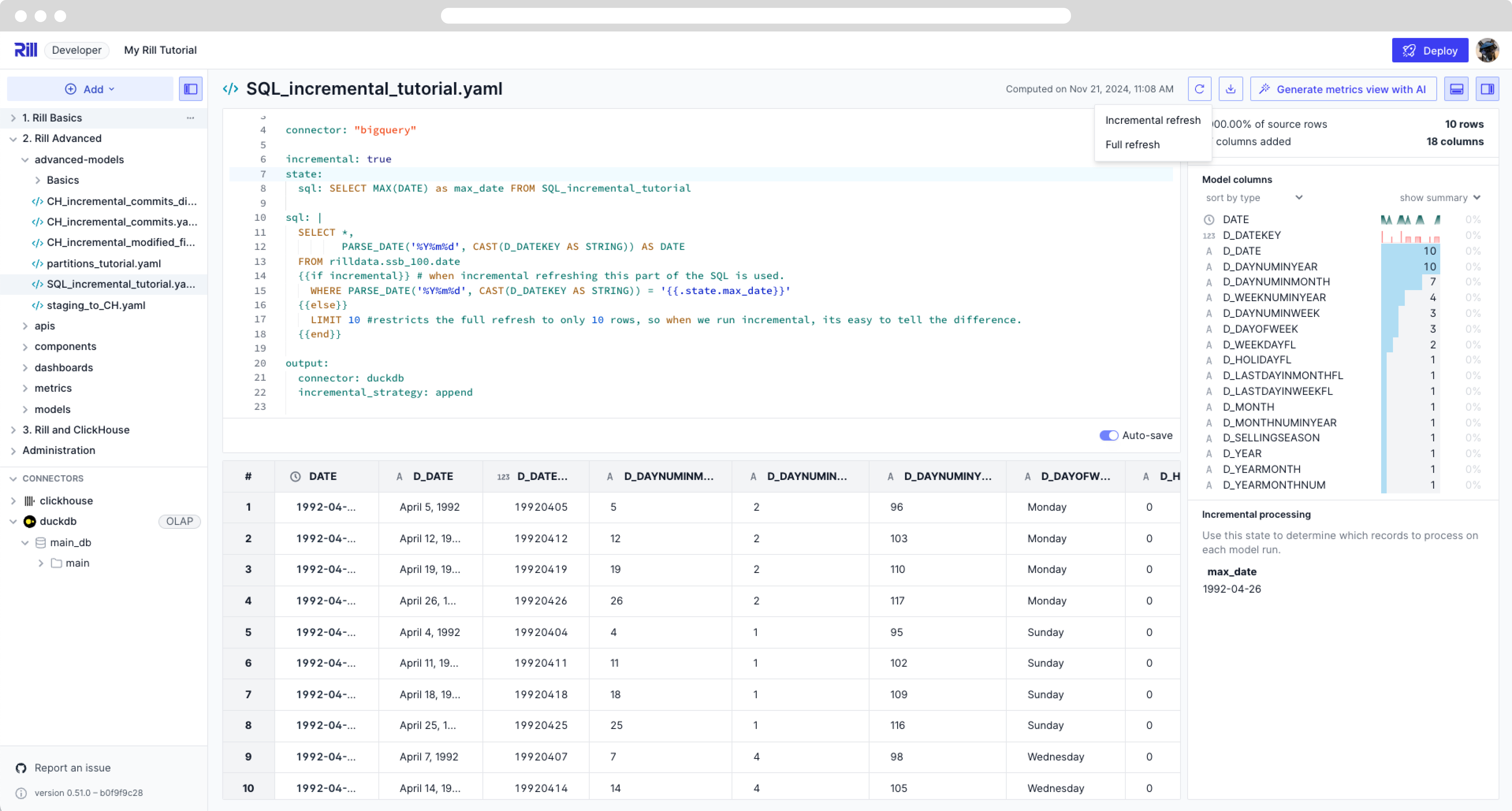Incremental Model based on a state from Data Warehouses
Another advanced concept within Rill is using Incremental Models with a state defined.
You will need to setup the connection to your data warehouse, depending on the connection please refer to our documentation.
In this example we use a DATE column as our defining state but depending on your data, you can use any defining column.
Understanding States in Models
Here’s how it works at a high level:
- State Definition: Based on a SQL query, defines a key that allows you to increment your model by
- Execution Strategy:
- Full Refresh: Runs without incremental processing.
- Incremental Refresh: Run incrementally based on the state defined, following the output connector's
incremental_strategy(either append or merge for SQL connectors).
Let's create a basic partitions model.
In this example, we are using a sample dataset that exists in Big Query: rilldata.ssb_100.date. In this case our table is not getting updated, so instead we'll modify the SQL to show you how incremental works.
-
Create a YAML file:
SQL_incremental_tutorial.yaml -
Use the following contents to create your own model.
type: model
materialize: true
connector: "bigquery" #or "snowflake"
incremental: true
state:
sql: SELECT MAX(DATE) as max_date FROM SQL_incremental_tutorial #should be the name of the current model
sql: |
SELECT *,
PARSE_DATE('%Y%m%d', CAST(D_DATEKEY AS STRING)) AS DATE
FROM rilldata.ssb_100.date
{{if incremental}} # when incremental refreshing this part of the SQL is used.
WHERE PARSE_DATE('%Y%m%d', CAST(D_DATEKEY AS STRING)) = '{{.state.max_date}}' #normally would want to set this to where DATE > '{{.state.max_date}}' to only append new rows.
{{else}}
LIMIT 10 #restricts the full refresh to only 10 rows, so when we run incremental, its easy to tell the difference.
{{end}}
output:
connector: duckdb
incremental_strategy: append #merge, requires unique_key
#unique_key: [column_name] #if strategy is merge
- In the UI, try refreshing both incrementally and fully to see the difference in the model that loads.
- when selecting a full refresh, only 10 rows should be returned.
- when selecting incremental refresh, it will append values to the inital 10 values in the full refresh.

Unlike partitions, states do not paritition the dataset per refresh so you will not be able to via the UI or CLI, see if there is a specific partition that errored and manually refresh this. In the cases of data disrecpancies in a state incremented model, please run a full refresh.
Was this content helpful?